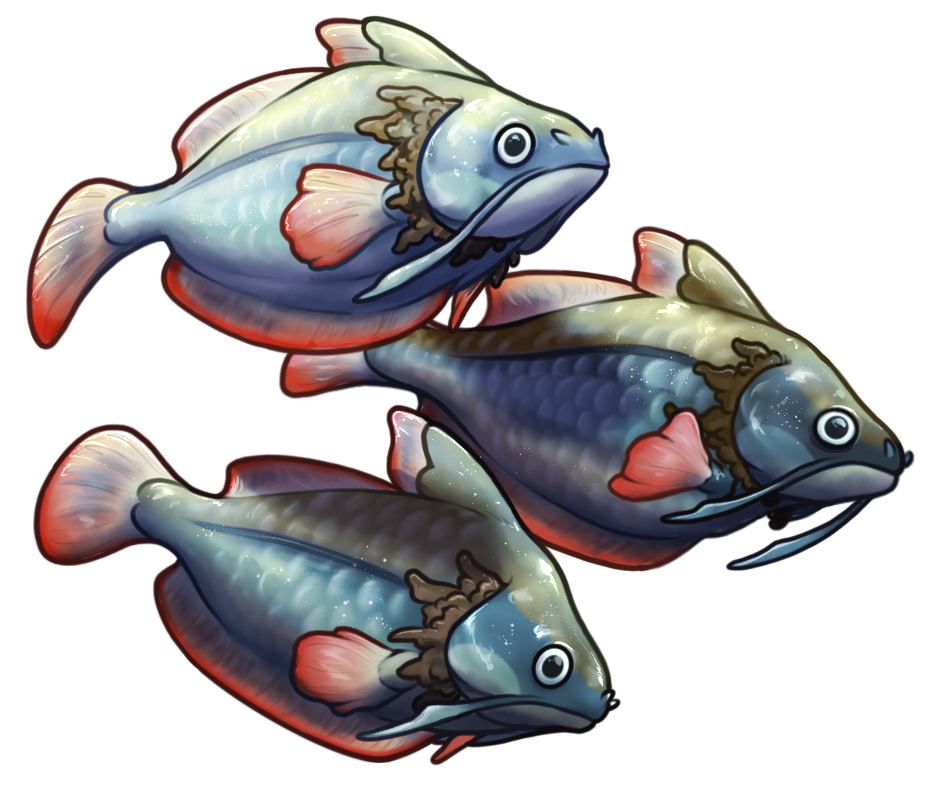
Frillgill
A color explosion!!
The Frillgill is a small, highly adaptable freshwater fish found across nearly all aquatic regions- from weedy ponds to open rivers and even brackish coastal shallows. It is one of the most common fish in the known world, yet no two individuals ever look exactly the same. It is roughly the size of an open hand, ranging from 2 inches to 6 inches at most. The frillfin is instantly recognizable by its brilliant body color that ranges from dull earth tones to dazzling blues, greens, yellows, and even purples. Despite this wide range, the fins are almost always red-orange, giving them a splash of contrast that stands out even when the rest of the body blends in.
A defining feature is the exposed gill filaments - short, ribbonlike structures that emerge from beneath the gill plates and resemble tufts of soft seaweed. These frills are flexible and sensitive, and their color and texture can subtly shift to help the fish better match surrounding vegetation. When nestled among reeds or mossy stones, the Frillfin becomes nearly invisible. In calm water, entire schools may appear to dissolve into the plants they hide among.
Each Frillfin also sports two long whiskers that form off of the end of each premaxilla, likely used for sensing chemical traces and minute shifts in current. Another unique trait is its fin structure! The ventral fin has evolved into one sweeping fin that undulates like a ribbon, with the ventral fin completely disappearing.
Frillgills are schooling fish by nature, forming dense groups that move together through aquatic foliage. Their strength lies in numbers and camouflage rather than speed or armor. When startled, a school will scatter into cover, the multitude of colors creating a confusing flicker effect that makes it hard for predators to track individuals. They feed on microinvertebrates, larvae, and algae scraped from plant surfaces.

Frillfins are a keystone species in many freshwater ecosystems. Their abundance, adaptability, and foraging habits help maintain healthy aquatic vegetation and keep insect larvae populations in balance. In turn, they serve as a major food source for countless predators, from birds to larger fish to faunids.
Frillfin scales are sometimes collected during large harvests and used as accents in embroidery, paint, or woven jewelry. In some towns, children are taught to catch them gently using leaf nets for sport before releasing them- a tradition seen as a lesson in patience and observation.
Concept by Goryteeth, Rendering by Necrologia, Info by Deertush.

